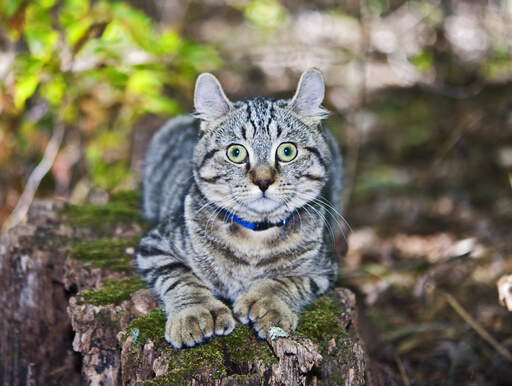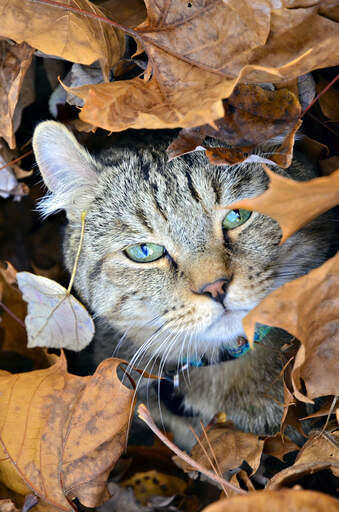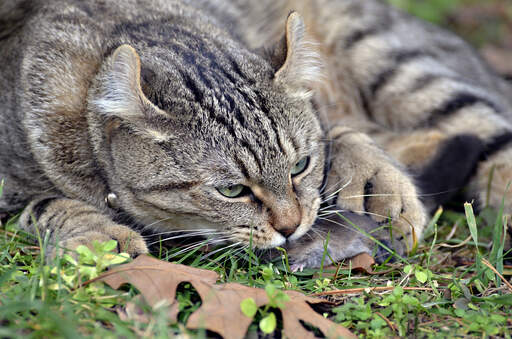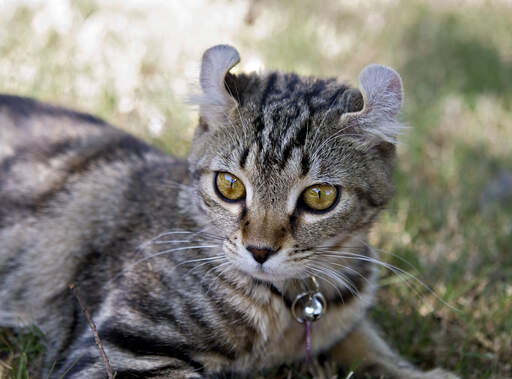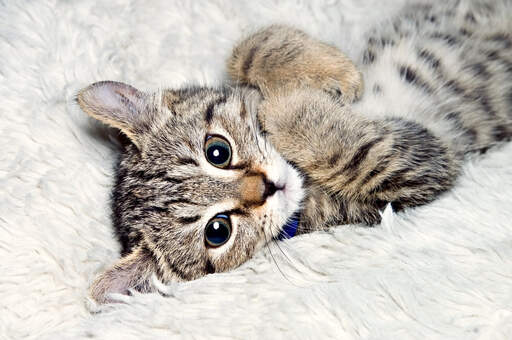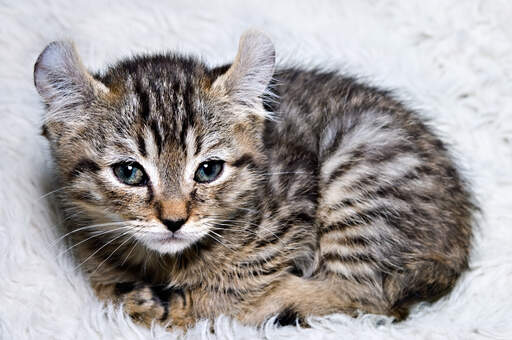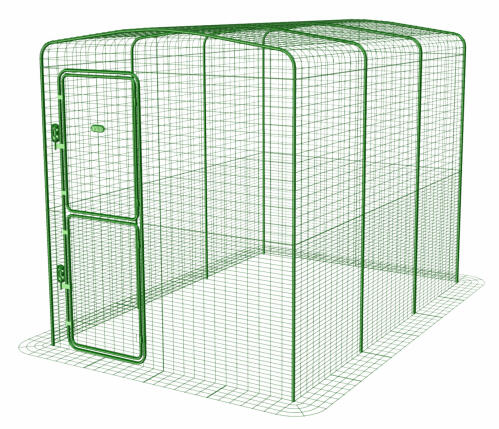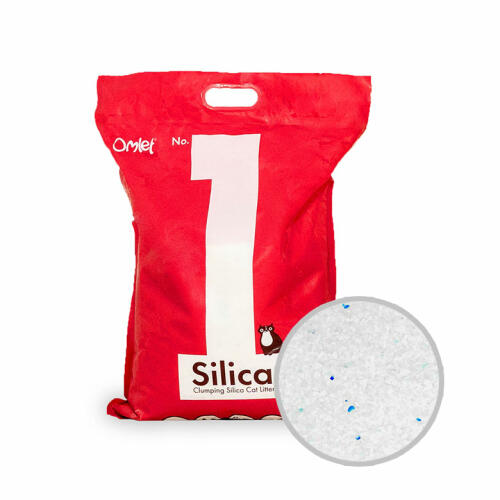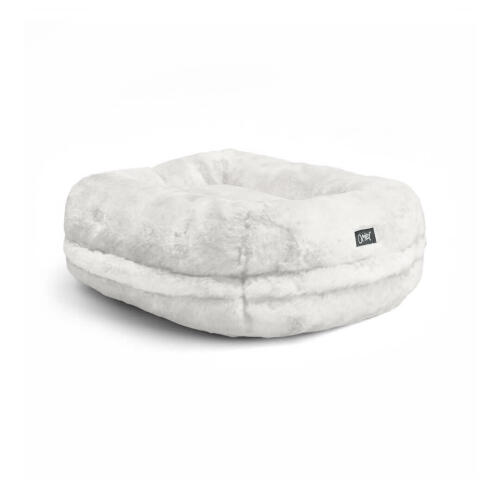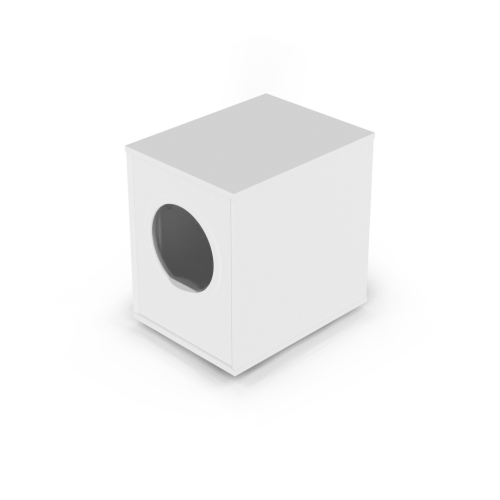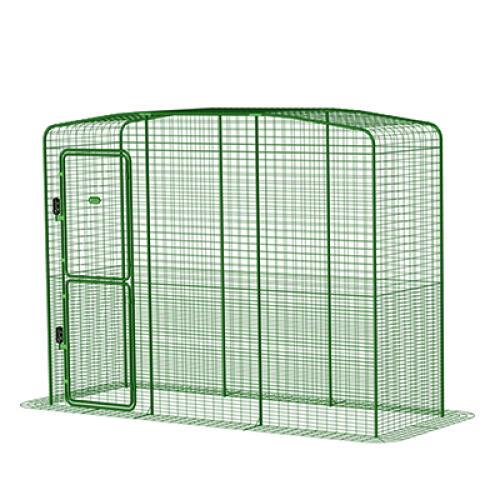Highlander-Katze






Geschichte
The Highlander cat is a relatively new breed that is still in development. The history of the breed begins in 2004 when breeders hoped to create a powerful domestic cat with the look a big cat. The name Highlander was settled on in 2005 and breeders focused on defining the breed and its characteristics with the aim of achieving championship status with The International Cat Association.
Unusually the cats used to develop the breed were carefully chosen from the domestic gene pool and not from any pedigree breeds. This helped to keep the highlander healthy with a wide gene pool.
A key feature of the Highlander cat are the ears which should always be curled. In May 2008 the Highlander was recognised for competition in the Preliminary New Breed class.
Verhalten
Highlanders may be bred for a big cat look but they are big softies really. They love to play and chase, and they thrive on human company. Highlanders are the type of cat that will be there to greet you at the door and won’t hesitate to introduce themselves to visitors.
They aren’t too loud vocally but they are high energy cats who like to release their energy through exciting play and physical games. These are the activities that help build the powerful musculature that is so sort after in the breed.
Varietäten
Short and Long haired - tabby markings.
Einzelheiten zur Rasse
- Status: Selten
- Herkunft: North America
- Ungefährer Entstehungszeitraum: 2000s
- Haarlänge: Kurzhaarig
- Aktivitätsgrad: Hoch
- Vokalität: Größe M
- Child friendly: Kinderfreundlich
- Intelligenz:
- Verspieltheit: Verspielt
- Pflegeanforderungen: Einmal pro Woche
- Produktgewicht: 4.5 - 11.0kg
- Version: Größe M
- Hauskatze oder Freiläufer: Outdoor Cat
- Verträglichkeit mit anderen Haustieren:
- Soziale Bedürfnisse:
